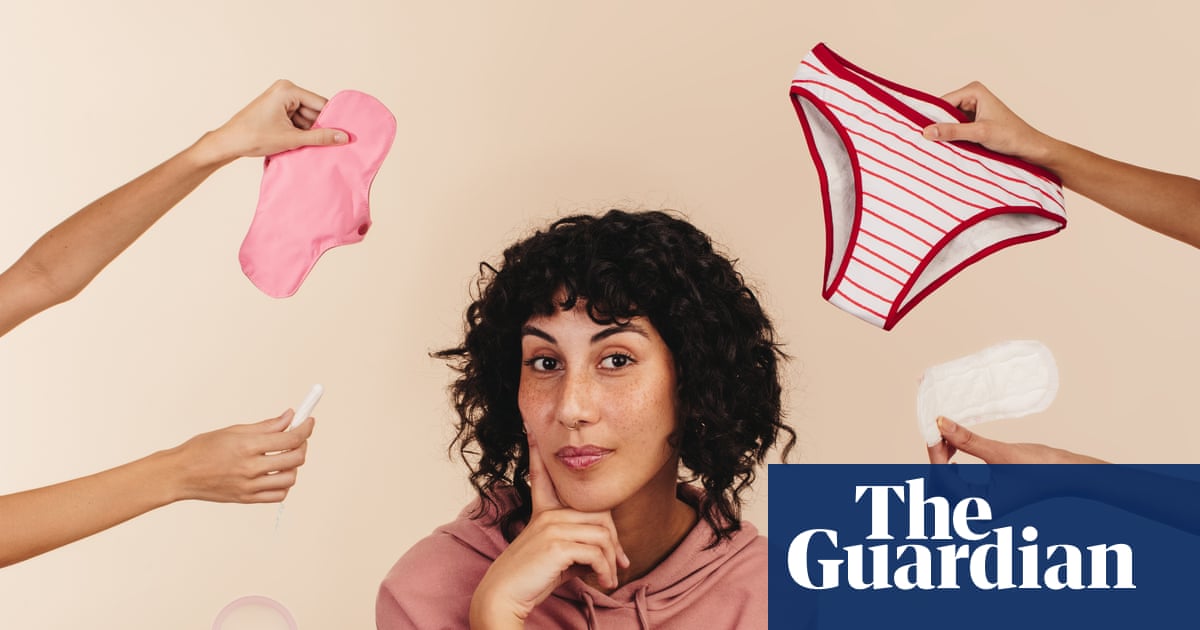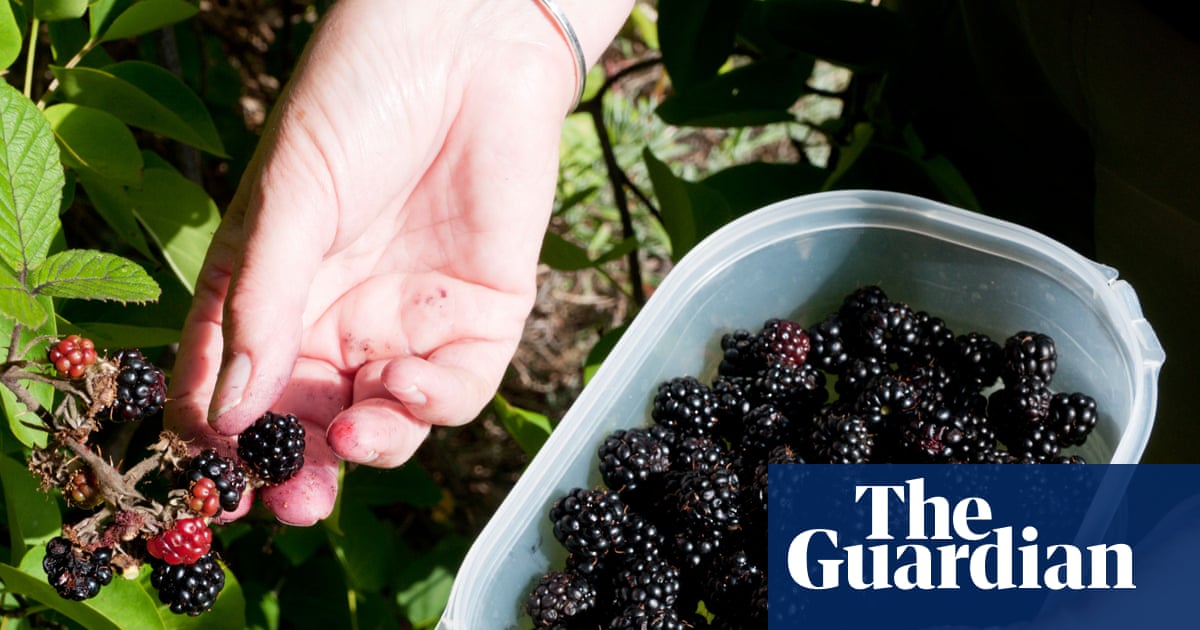I grew up playing in the woods, sleeping with my dog and dead-heading flowers for my dad. This rampant early exposure should have turned me into a hay fever immunity machine, but here I am, all itchy eyes and streaming nose as summer hoves into view. Not that I can see it very well.
“You cannot cure hay fever,” is the rather dispiriting verdict of the NHS website, which recommends staying inside with your doors and windows shut. I sought a second opinion from Dr Unnati Desai, national lead for GP Services at Nuffield Health. “Trying to avoid any type of pollen from about February to September in the UK is near impossible,” she says. “Instead, find the right way to control your symptoms.”
Or stop the pollen getting up my schnozz in the first place, says Dr Megha Pancholi, clinical lead at Boots Online Doctor. “Simple things can reduce your exposure, like wearing wraparound sunglasses and applying petroleum jelly around your nose.” Well, that’s a look.
The more experts I spoke to, the more hay fever cures were touted. To find out which ones actually worked, I set about squirting them up my nose, swallowing them, wearing them and, in a few welcome cases, sleeping with them. Here, I reveal the remedies that won by a dribble-free nose.
Why you should trust me
I’ve spent three decades testing consumer products, from heated clothes airers to computer software, so I’m professionally sceptical of manufacturers’ claims to magically improve our lives by buying their stuff. As a long-term freelancer, I also have a solid background in running away from work to hang out with trees, which feed my soul and torture my sinuses with pollen.
People’s hay fever triggers and symptoms vary widely, so my own experience wasn’t enough for this test. I shared products with my similarly sneeze-ravaged husband, Alan, and also consulted doctors, pharmacists and allergy experts to find out what remedies we should be using and why they might work.
How I tested
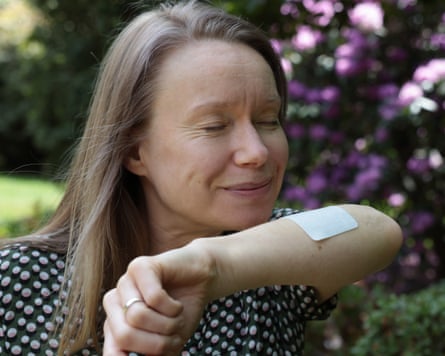
Testing hay fever cures is by necessity a long-winded process, and not just because I kept stopping to blow my nose, or whichever part of my face the snot was coming from. Many remedies can be safely “layered”, or combined with each other, but I wanted to find out how well each one worked on its own. So I used them separately for a few days each, beginning in March, when 2025’s balmy spring began.
I wasn’t exactly comparing like with like. Unlike, say, the best mattresses, which all have similar benefits in similar ways, hay fever cures take a wild array of different approaches. Some soothe symptoms while others block allergens; some are drug-based and others adamantly not; some provide immediate relief while others take weeks to make a lasting difference. Then there was a rollercoaster of other variables that changed by the day, such as pollen count, time spent outdoors and degree of cat cuddling.
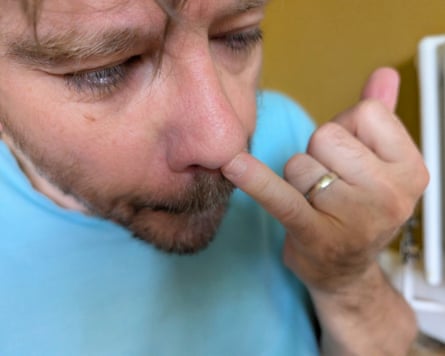
This meant I couldn’t get too hung up on details such as the precise number of minutes each product took to stop me sneezing, or the exact daily weight of soggy tissues. But I wanted meaningful test results, so I got Alan to try all the remedies as well, if only to stop him and his nose from costing us an extra loo roll a day. We then compared notes on each product’s efficacy, convenience and value for money.
How to stop hay fever

Air purifier with Hepa filter
I don’t sleep in the woods, but my hay fever symptoms are worse at night. I regularly wake up at 3am with a scratchy throat, and Alan and I both greet the morning alarm with sneezing fits. What’s going on?
Indoor air is relatively static, so dust and pollen build up unless you clear them. “Humidifiers can help by moistening the air, meaning dust and pollen find it harder to float around,” says Hannah Shore, head of sleep science at Mattress Online. “Air purifiers can take a lot of the floating particles out of the air. Look for one with a ‘quiet’ setting so you can use it overnight.”
I tried a couple of air purifier models: a large wifi-connected MeacoClean, whose Hepa (high efficiency particulate air) filter powerfully rid our bedroom of allergens within a few hours, and a compact Vitesy Eteria. The MeacoClean’s night mode was unobtrusive while I fell asleep, and neither of us woke up sneezing. The desktop Vitesy helped keep my nose relatively clear while I worked.
Relief: our symptoms cleared within hours, albeit indoors only.

MeacoClean CA-Hepa wifi air purifier
£199.99 at Meaco
£199.99 at Amazon
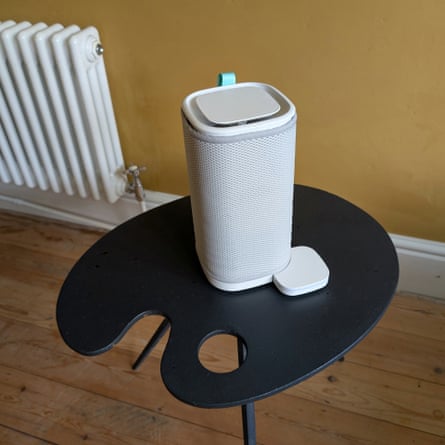
Vitesy Eteria compact air purifier
Vaseline – or a less icky barrier balm
“A thin layer of petroleum jelly inside the nostrils helps trap pollen before it enters the nose,” says GP and author Dr Roger Henderson. Turns out the Vaseline trick actually works, genuinely calming my nose down. Alan found it effective but “disgusting”, noting that it smells of a petrol forecourt, which may be to some people’s taste but not ours. It’s also slimy and makes your nostrils glisten snottily in the light, which I’m guessing isn’t high on our fashion editor’s looks of the season.
I found a more palatable alternative in organic barrier balms. The beeswax and seed oil formulation of HayMax gives it a firmer texture than Vaseline, and its frankincense, aloe and lavender varieties all smell delicious. Alan was an instant fan when it stopped his nose from running. I found it more effective for symptom prevention rather than cure – and the lavender version helped me sleep.
Relief: won’t stop a full-on sneezing fit, but helped me breathe and soothed symptoms for a couple of hours.
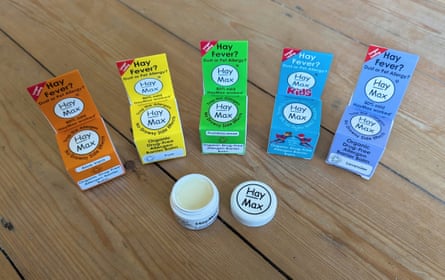
HayMax balm
£8.49 for 5ml at Boots
£8.49 for 5ml at Holland and Barrett
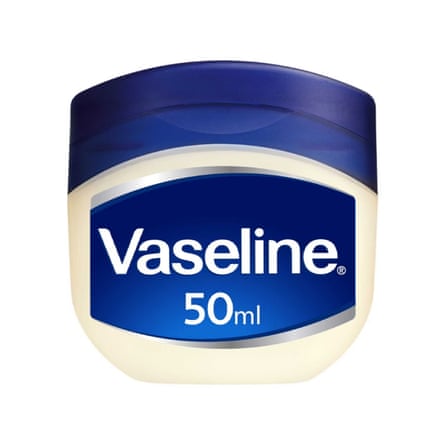
Vaseline original petroleum jelly
£1.80 for 50ml at Boots
£1.80 for 50ml at Superdrug
Saline nasal spray
“I regularly deal with patients suffering from summer allergies, primarily allergic rhinitis,” says ENT (ear, nose and throat) surgeon Dr Anil Joshi. “Saline (salt water) sprays moisturise the nasal mucosa, aid in the clearance of allergens and reduce inflammation. This can provide significant relief for patients with chronic rhinosinusitis and nasal allergies, especially when coupled with other therapies.”
My own GP recommended saline spray years ago, and although I hated it at first (feeling much as I imagine it would to be water-boarded in the sea), it soon became a powerful ally in my war on a runny nose and sore throat. I like using straight-up saline, but Alan hated the “salty aftertaste” and preferred xylitol-sweetened Xlear.
Relief: within half an hour, although you’ll need to blow your nose a lot.

Xlear nasal spray
£10.23 for 45ml at iHerb
£9.99 for 45ml at Amazon
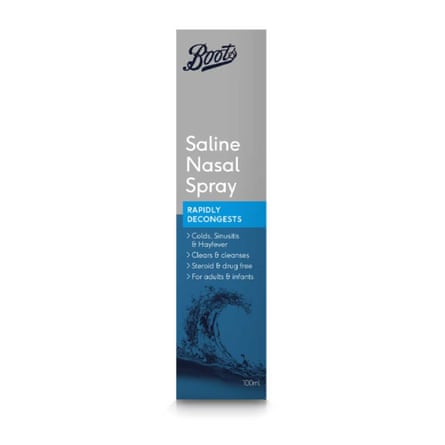
Boots saline nasal spray
Steroid nasal spray
“Beconase and Flixonase contain small amounts of steroid such as beclometasone,” says Dr Naveed Asif, GP at the London General Practice. “These help to reduce the body’s allergic response to triggers such as pollen.” Steroid sprays aren’t drug-free like saline spray, but they’re safe for medium-term use (up to about three months, says the NHS) and they’re brilliant value.
Their main downside is that it takes a couple of weeks to feel the effects. I continued with the other remedies while Alan started on the Beconase. “It took ages to work,” he said after two sprays a day for three weeks. “But it’s definitely helped, because I’ve stopped going through an entire kitchen roll to blow my nose.” For that, I am very grateful.
Relief: takes two weeks to have an effect, then provides long-term relief from a range of symptoms.
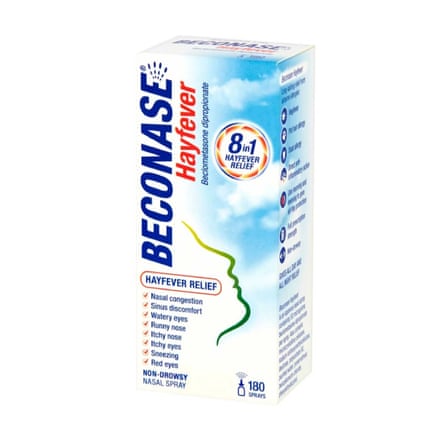
Beconase hay fever spray
£10.99 for 180 sprays at Superdrug
£11 for 180 sprays at Boots
Non-drowsy antihistamines
Antihistamines were recommended by most of the experts I spoke to, including those who were advocates of more natural approaches. “Your symptoms are driven by excess histamine production,” says medical herbalist Siobhán Carroll. “Antihistamines quell inappropriate histamine production and reduce the snowball effect of increased inflammation in the body.”
The key is finding the antihistamine that works for you. “They all work in a similar way, but people may respond differently to each one,” says Pancholi of Boots Online Doctor. “Some antihistamines may be more effective for certain individuals than others, providing longer relief or causing less drowsiness.”
I took cetirizine (Piriteze) and loratadine (Clarityn) for a week each, and they both reduced my symptoms, but not quickly or consistently. Cetirizine also triggered an attack of zits on my chin. Not just once, but within a few days of every single attempt to take it.
I found my ideal match in the newer “second-generation” non-drowsy antihistamine fexofenadine (Allevia), which has proved especially good at soothing my itchy eyes. I find my symptoms return by evening, though, rather than the advertised 24 hours.
Relief: within 30 minutes and lasting several hours, but not the whole day.
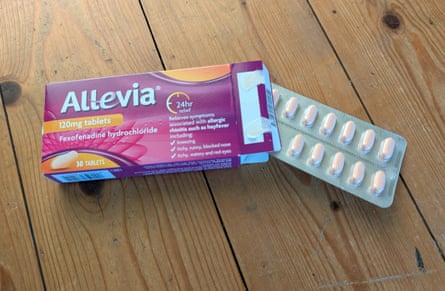
Allevia tablets
£11.49 for 30 x 120mg tablets at Superdrug
£12.49 for 30 x 120mg tablets at Boots
Hepa vacuum cleaner
Vacuuming is a hay fever sufferer’s nightmare in the short term because it disturbs dormant dust, but it’s also essential for ridding your space of allergens. “Vacuums with Hepa filters are certified to trap more than 99.97% of airborne particles, including pollen, dust mites and pet dander,” says Dr Daisy Mae, allergy expert for Bed Factory Direct. “In your bedroom, this can hugely impact sleep.” And don’t forget to vacuum your mattress, she adds.
I gave Alan the job of blitzing the bedroom with an Ultenic Hepa vacuum, whose alarming headlight revealed revolting levels of dust under the bed. Sneezing his way through the task, an hour later the room felt more comfortable and we slept soundly, with no runny noses to greet us in the morning.
Relief: aggravates symptoms at first, but relief is powerful and lasting if you keep up the vacuuming.
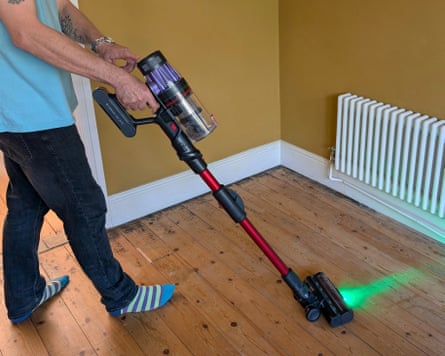
Ultenic U16 flex cordless vacuum with Hepa filter
Eye drops
I love using eye drops that have been stored in the fridge, and pharmacist Rita Ghelani approves. “Using eye drops daily keeps your eyes hydrated and feeling less sore,” she says. “You can use special allergy eye drops, or those that lubricate and soothe the eyes.”
My favourite budget choice is Boots hay fever relief eye drops, whose 2% sodium cromoglicate content relieves that niggling summer itch in my lower eyelids. If you wear contact lenses, then your best bet is Pollinosan hay fever eye drops from A Vogel, whose natural hyaluronic acid content soothed my eyes for several days during the great dandelion seed blizzard of April 2025.
Relief: immediate but not long-lasting.

Boots hay fever relief 2% w/v eye drops
£4.85 for 10ml at Boots
Optrex hay fever relief 2% w/v eye drops
£6.25 for 10ml at Superdrug
£6.49 for 10ml at Boots

A Vogel Pollinosan hay fever eye drops
£10.49 for 10ml at Holland & Barrett
£13.99 for 10ml at Victoria Health
Wraparound sunglasses and wide-brimmed hat
Pharmacist Kiran Jones of Oxford Online Pharmacy recommends wearing sunglasses as part of a layered strategy. “Start a nasal steroid two weeks before the hay fever season, use a barrier balm around the nostrils, wear wraparound sunglasses and check the Met Office three-hour pollen forecast.”
My cheap, decidedly un-stylish pair of wraparounds proved surprisingly effective at blocking pollen and other airborne intruders (including midges) – and also stopped me from rubbing my eyes.
When I upped the pollen-blocking ante by adding a wide-brimmed hat, the relief was even more noticeable – at least for my eyes. Sadly, my respiratory symptoms marched on. I tested this outfit in a particularly floral bit of park and nearly blew the glasses clean off with my pollen-triggered coughing fit.
Relief: stopped my eyes feeling puffy and itchy within a few minutes when outdoors, but did nothing to relieve coughing and sneezing.

Bollé wraparound sunglasses
after newsletter promotion
£10.32 at Staples
£22.95 at Allergy Best Buys

Uilyniu wraparound sunglasses
£11.49 for two pairs at Amazon

Forclaz women’s anti-UV trekking cap
Anti-allergy bedding
“Anti-allergy bedding is treated to resist irritants,” says Shore of Mattress Online. “Look for products approved by Allergy UK.” Alan and I tried a few samples of bedding from Silentnight and Bed Factory Direct for a week in early May, when the pollen count was particularly high. We slept well, and I especially enjoyed the cooling, cushioned feel of the mattress protector. The pillow protector was scratchy against my face, though, so I added an old pillowcase – which possibly defeated the whole point.
Relief: helped us sleep without sneezing, but more of a long-term strategy than instant relief.

Silentnight anti-allergy pillow protector
£12 a pair at Argos
£12 a pair at Amazon

Silentnight anti-allergy duvet
From £19 for a double at Silentnight
£24 for a double at Argos

Silentnight anti-allergy mattress protector
£17 for a double at Boots
£14.30 for a double at Amazon
Hepa filter mask
If high pollen days leave you so ravaged by symptoms that you fear going outside, then a mask with a built-in Hepa filter may be your only option. For those of us who just want to breathe and see more easily in summer, however, these fabric gas masks are a bit too much.
When I wore a Respro Allergy Mask for walks in my local parks and nature reserves, I looked like I was heading for the trenches. My sneezing did stop after a few minutes, but I also felt hot and daft, and my eyes stayed itchy. The main relief it gave was the pleasure of taking it off once I was back indoors.
Relief: didn’t relieve my itchy eyes, but powerfully prevents respiratory symptoms while wearing.

Respro allergy mask N95
Facial cleanser
Cleaning the pollen off your face before bed was a strategy mentioned by a few of the experts I spoke to. “Make sure you get rid of any pollen particles on your skin, particularly your hands, face and any long hair,” says sleep expert Shore. Even a quick wipe with cleanser helps, says Cultskin founder Dr Tijion Esho: “Cleansing around the eye area can help ease itching and prevent allergens from being transferred into your eyes.”
And don’t forget to moisturise. “Moisturiser provides a strong skin barrier,” says dermatologist Dr Benjamin Chun-Man Lee. And that doesn’t apply only to adults: “Studies have shown the value of moisturising in infancy to halt the progression of hay fever and allergic rhinitis.”
An extra cleansing session at night didn’t make much difference for me, because I always have a bath and wash my face before bed anyway. But every little counts, and it’s worth starting now if you’re not in the habit of cleaning muck – including allergens – off your face before bed.
Relief: extra cleansing at night helps fend off symptoms by morning.

Byoma Milky moisture cleanser
£13.99 for 175ml at Cult Beauty
£14 for 175ml at Space NK
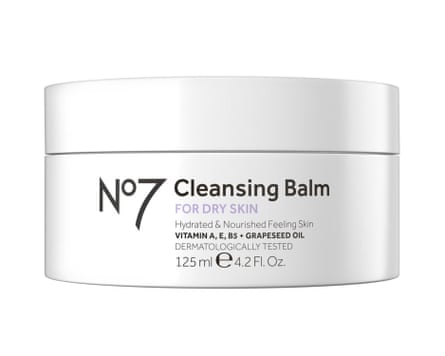
No7 cleansing balm
Hydration and electrolytes
“When your body is dehydrated, it can produce more histamine,” says sports nutritionist Jess Hillard. Cutting down on booze can help, says pharmacist Ghelani. “Some alcoholic drinks contain histamine, the chemical that sets off an allergic reaction in the body. Alcohol also dehydrates you, and that can make your symptoms worse.”
Electrolyte powder in water can help your body retain water even when you’re sweating a lot, so I tried that. I wouldn’t say the cocktail washed away my symptoms, but a few days of careful dosing made me feel more alert when the weather was hot and the pollen was high.
Relief: not immediate in my experience, but good hydration is a long-term anti-allergy strategy.

Warrior Creatine plus electrolytes
£17.99 for 80 servings at Warrior
Decongestant oil
“A natural decongestant can make it easier to breathe,” says Henderson. “Aloe-vera-infused decongestants also help soothe irritation.”
The strong snot-banishing fumes of Vicks VapoRub and Olbas Oil proved a hit with my husband, but I opted for Olbas patches. I evicted Alan to the spare room, slapped a patch on the empty pillow and slept like a dream – although my hay feverish eyes turned a bit pink from the mild vapour.
Relief: quick and moderately effective relief for blocked noses, but may irritate eyes.

Olbas Breathe Easy patches
£6.49 for six at the Independent Pharmacy
£5.95 for six at Amazon

Vicks VapoRub
£6.75 for 100g at Boots
£6 for 100g at Amazon
And what not to try …

Local honey
Unprocessed local honey is the hay fever cure du jour for Instagram influencers. Duly influenced, Alan and I spent weeks feasting on the handiwork of Hampshire bees in early spring. But my eyes still itched and Alan’s nose still required lockdown-stockpile levels of loo roll, so I can’t say it worked.
“Some people believe that eating local honey helps build up your body’s resistance against local pollen,” says Crystal Wyllie, GP at Asda Online Doctor. “But there isn’t enough scientific evidence to support this. If eating local honey is your only hay fever remedy, you could be wasting money and leaving yourself at risk on high pollen days.”
Sedating antihistamines
A cheap, easily available pill that stops you sneezing and sends you to sleep? Sign me up! Actually, don’t, because first-generation antihistamines such as chlorpheniramine (Piriton) left me more tired than before. They made me drowsy, but this didn’t translate into satisfying sleep – and I woke up during the night with a hay fever-triggered sore throat.
It’s not just me. “One study found that sedating antihistamines cause non-REM sleep, which doesn’t involve dreaming but a lot of snoring,” says Chun-Man Lee. “Participants in the study woke up feeling unrefreshed because of the lack of true rest.”
Sedating antihistamines do work for many users, as sleep aids as well as hay fever treatments. But they didn’t do the trick for me.
Blocked nose spray
I was once a xylometazoline addict. The active ingredient in Sudafed Blocked Nose Spray and others, xylometazoline, opens a blocked nose by shrinking your blood vessels, and the relief feels magical if you’re bunged up by hay fever or a cold. But it soon creates a physical dependency – so it actually made my symptoms worse.
“Many brands of nasal decongestant sprays contain xylometazoline (or oxymetazoline), which works by causing the blood vessels in the lining of the nose and sinuses to contract and narrow,” says Ghelani. “Initially, the ingredient appears to help reduce swelling and the general feeling of congestion. However, products containing it should not be used continuously for more than seven days, as they can cause rebound congestion.”
I ignored this advice in my early days of using a blocked nose spray to soothe hay fever symptoms. After weeks of daily use, I eventually struggled to breathe without it, especially at night. I weaned myself off it by only using it in one nostril, then every other night, and eventually – at last – not at all.
What you need to know
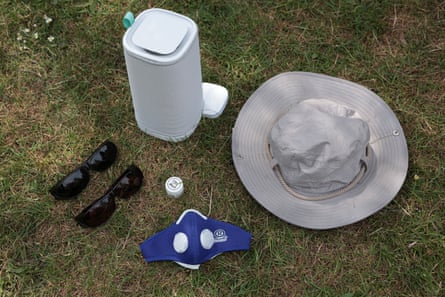
What is hay fever, and what are the symptoms?
Hay fever, also known as seasonal allergic rhinitis, is a set of symptoms triggered by your body’s response – or overreaction – to pollen.
If you’re one of the unlucky 49% whose immune system sees pollen as a threat, your body “protects” you from it by producing histamine and other chemicals that make your nose run, your eyes itch, and your head ache. I make light of how my body’s own snotty overreaction affects my loo-roll bill, but for many people, the symptoms have a ruinous impact on their ability to work, sleep and simply enjoy summer.
“There isn’t a ‘one size fits all’ in terms of symptoms,” says Desai of Nuffield Health. “It comes down to the type of pollen you’re allergic to and how your body responds to the allergies.” Some of the less common symptoms she mentions are allergic conjunctivitis, tightness in the chest and wheezing when breathing out. “In some cases, medication may be needed to treat all three areas. If you suffer from severe hay fever, a GP can provide inhalers or oral steroids to help manage your overactive immune system.”
When does the hay fever season typically start and stop?
Hay fever season lasts much longer than summer. Tree pollen arrives first, as early as February, when trees start to pollinate. This lasts until about mid-May, at which point grass is the chief offender, especially when the massive council lawnmowers are out. Flower pollen (known by some killjoys as “weed pollen”) comes next, from about June to September.
More bad news: hay fever season is getting longer, and it’s down to the climate crisis. The Met Office cites research that “highlighted how increasingly unusual weather – as a result of climate change – coincided with increasingly erratic pollen seasons”. Other studies forecast that the climate emergency will increase the severity of hay fever season by up to 60%. Perhaps I then won’t feel so silly going out in a Hepa mask and wraparounds.
Jane Hoskyn is a journalist and WFH pioneer with three decades of experience in rearranging bookshelves and “testing’ coffee machines while deadlines loom. Her work has made her a low-key expert in all manner of consumables, from sports watches to solar panels. She would always rather be in the woods, ideally with a decent hay fever remedy to hand

.png) 3 months ago
123
3 months ago
123



